Why do marine animals live deep inside of lake when the surface of the lake freezes?
Step-by-Step Solution:
1. Understanding Water Density:
- Water has a unique property where its density is maximum at 4 degrees Celsius. This means that at this temperature, water is heavier and sinks to the bottom.
Hint: Remember that water behaves differently than most substances when it comes to temperature and density.
2. Temperature Drop:
- When the temperature of the lake drops below 4 degrees Celsius, the water above this temperature becomes less dense. As a result, this less dense water rises to the surface.
Hint: Consider how temperature changes affect the state and behavior of water.
3. Formation of Ice:
- As the surface water cools and becomes less dense, it eventually freezes when the temperature falls below 0 degrees Celsius, forming an ice layer on the surface of the lake.
Hint: Think about what happens to water when it transitions from a liquid to a solid state.
4. Insulating Effect of Ice:
- Ice is a poor conductor of heat. Therefore, the ice layer formed at the surface acts as an insulator, preventing the water below from losing heat and freezing.
Hint: Consider the properties of ice and how they affect heat transfer.
5. Survival of Marine Animals:
- Since the water at the bottom of the lake remains in a liquid state (due to the insulating effect of the ice), marine animals can survive in the deeper parts of the lake where the temperature is above freezing.
Hint: Reflect on the importance of temperature for the survival of aquatic life.
Final Conclusion:
Marine animals live deep inside lakes when the surface freezes because the unique property of water allows it to remain liquid at the bottom, protected by the insulating layer of ice above. This ensures that the aquatic life can continue to thrive even in freezing conditions.
- Water has a unique property where its density is maximum at 4 degrees Celsius. This means that at this temperature, water is heavier and sinks to the bottom.
- When the temperature of the lake drops below 4 degrees Celsius, the water above this temperature becomes less dense. As a result, this less dense water rises to the surface.
- As the surface water cools and becomes less dense, it eventually freezes when the temperature falls below 0 degrees Celsius, forming an ice layer on the surface of the lake.
- Ice is a poor conductor of heat. Therefore, the ice layer formed at the surface acts as an insulator, preventing the water below from losing heat and freezing.
- Since the water at the bottom of the lake remains in a liquid state (due to the insulating effect of the ice), marine animals can survive in the deeper parts of the lake where the temperature is above freezing.
Marine animals live deep inside lakes when the surface freezes because the unique property of water allows it to remain liquid at the bottom, protected by the insulating layer of ice above. This ensures that the aquatic life can continue to thrive even in freezing conditions.
Topper's Solved these Questions
- HEAT AND TEMPERATUREBOOK - HC VERMA ENGLISHCHAPTER - HEAT AND TEMPERATUREEXERCISE - Objective 2
6 Videos
- HEAT AND TEMPERATUREBOOK - HC VERMA ENGLISHCHAPTER - HEAT AND TEMPERATUREEXERCISE - Exercise
34 Videos
- GRAVITATIONBOOK - HC VERMA ENGLISHCHAPTER - GRAVITATIONEXERCISE - Question for short Answers
18 Videos
- HEAT TRANSFERBOOK - HC VERMA ENGLISHCHAPTER - HEAT TRANSFEREXERCISE - QUESTIONS FOR SHORT ANSWER
11 Videos
Similar Questions
Knowledge Check
The mass of living organisms in a lake is defined to be the biomass of the lake. If the biomass in a lake doubles each year, which of the following graphs could model the biomass in the lake as a function of time? (Note: In each graph below, O represents (0, 0).)
A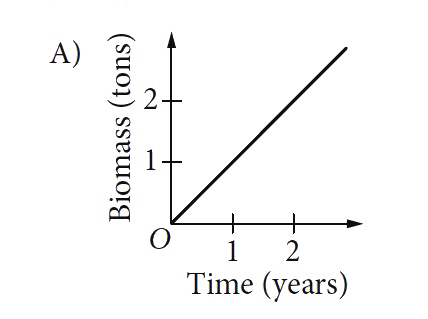 B
B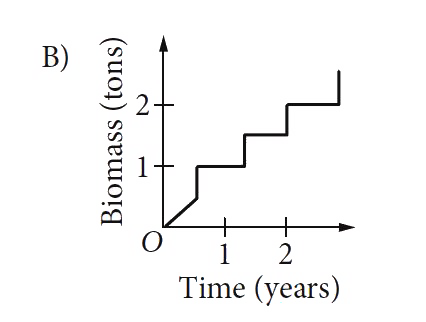 C
C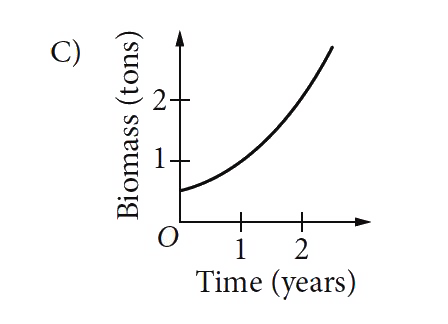 D
D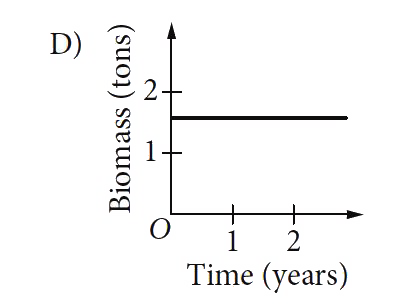
Statement-1: Upthurst on a solid block of iron when immersed in a lake will be less on the surface than on the bed of the lake.
Statement-2: On the surface of the lake density of water will be less than that at the bed and upthrust depends on the density of liquid.
View SolutionWhy do the bodies of deep sea burst when they are brought to the surface of sea?
View SolutionA stone of relative density K is released from rest on the surface of a lake. If viscous effects are lgnored, the stone sinks in water with an acceleration of
View SolutionExplain why a gas bubble released at the bottom of a lake grows in size as it rises to the surface of the lake.
View SolutionWhen and why do some animals like frogs hibernate ?
View SolutionA coin lies on the bottom of a lake 2m deep at a horizontal distance x from the spotlight (a source of thin parallel been of light) situated 1m above the surface of a liquid of refractive index μ=√2) and height 2m. Find x.
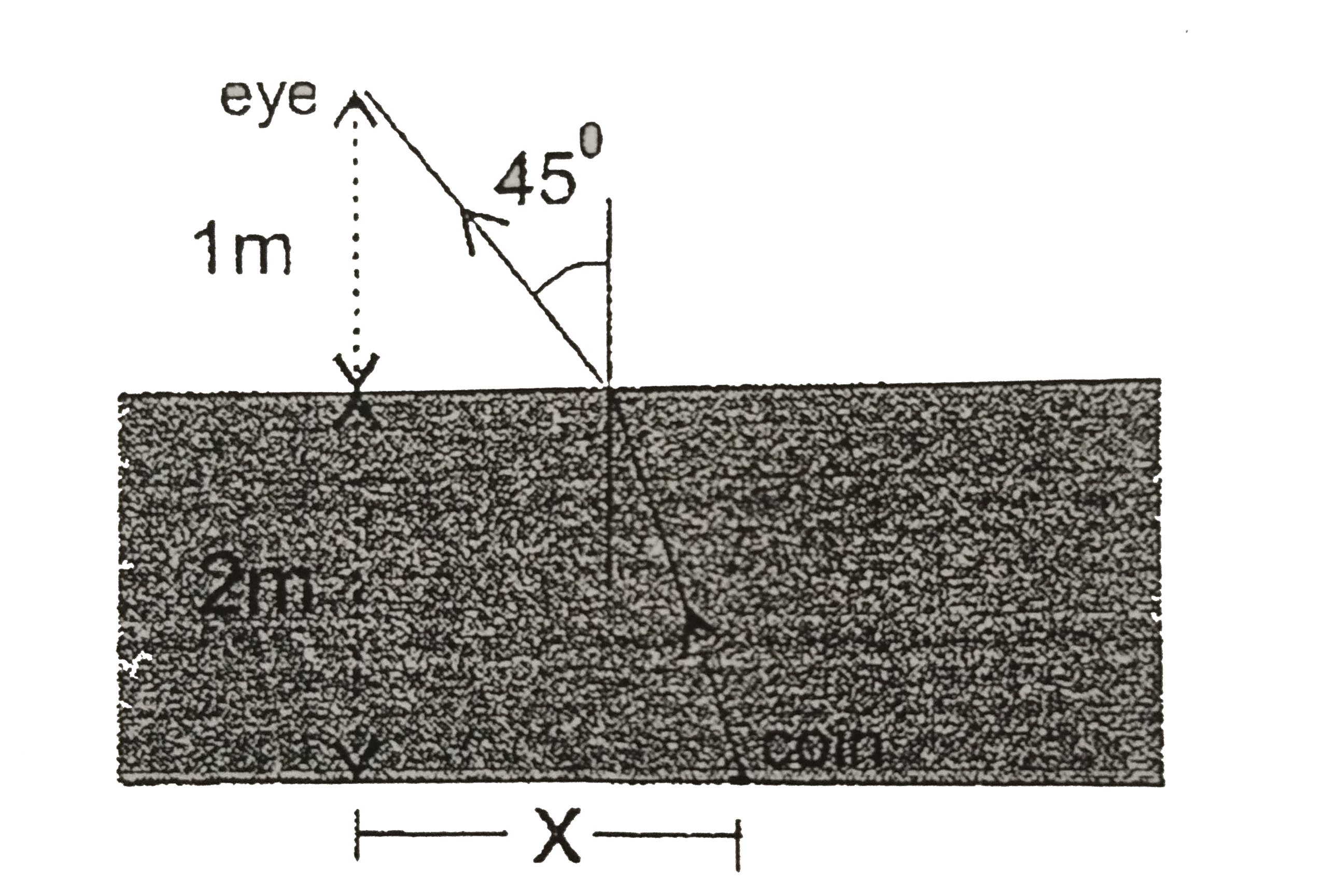
View SolutionFrom a point 36 m above the surface of a lake , the angle of elevation of a bird is observed to be 30∘ and angle of depression of its image in the water of the lake is observed to be 60∘ . Find the actual of the bird above the surface of the lake .
View Solution
